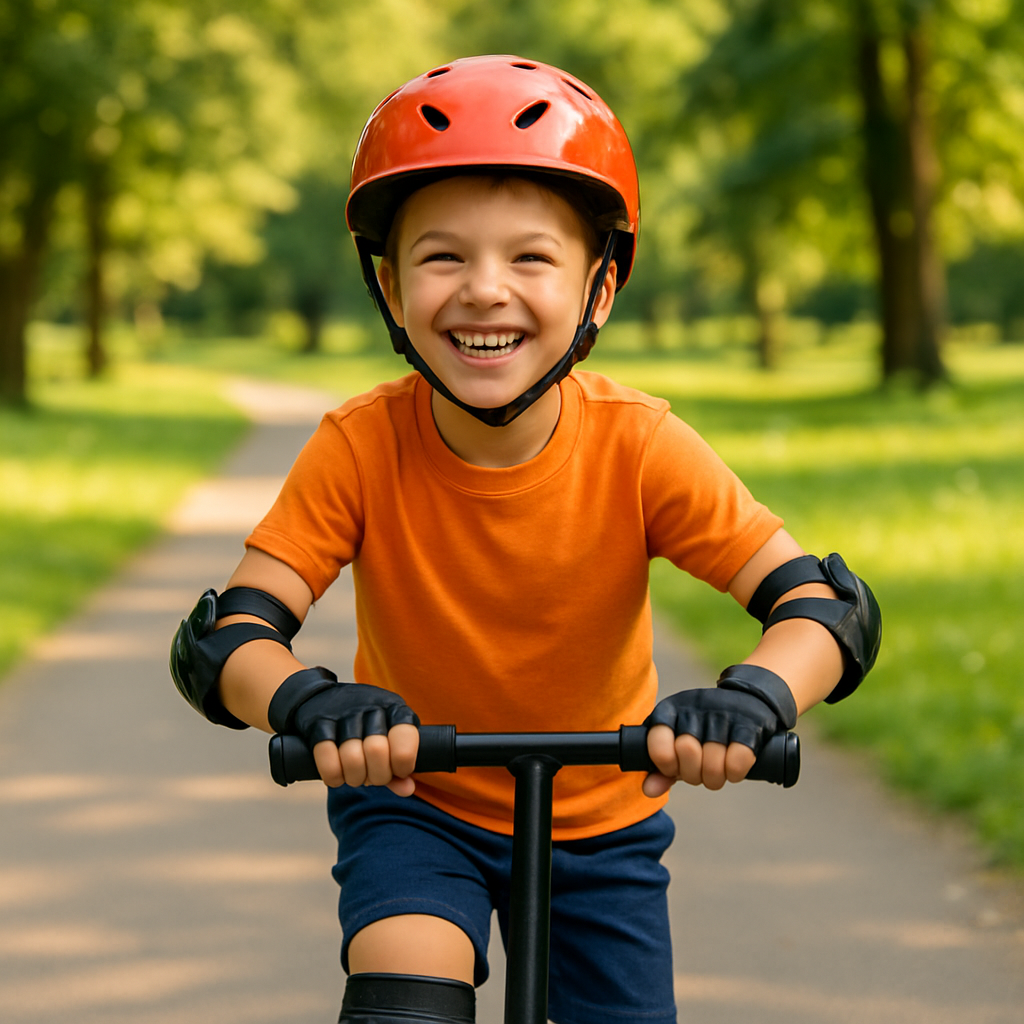
The Impact of “Scooter Riding" on Children’s Health
Share
Introduction
kicking scooters are a favorite childhood activity. But what does research say about how they impact children’s bodies? This post (7‑minute read) examines muscle development, balance, injury risk, and safety, citing peer‑reviewed studies and expert guidance.
1. Muscle Activation & Bilateral Development
A study of 6–8-year-olds using EMG during scooter rides revealed:
-
Significant asymmetry: Five key lower‑limb muscles (gastrocnemius, biceps femoris, etc.) were more active in the pushing leg during propulsion (p < 0.01) pmc.ncbi.nlm.nih.gov.
-
Encouragingly, when children switch push legs, symmetry improved, indicating balance through alternating use .
➡️ Bottom line: Riding from both sides promotes muscular balance rather than one‑sided dominance.
2. Posture, Core Stability & Hip Flexor Stretching
Physiotherapy experts note scooter riding:
-
Fosters upright posture: neutral pelvis, open chest, aligned spine.
-
Stretches hip flexors—counteracting postural tightness from sitting pmc.ncbi.nlm.nih.gov+1researchgate.net+1chop.edu+5yedoo.eu+5time.com+5.
-
Engages trunk muscles for stability, improving coordination.
➡️ In simple terms: Kicking scooters train core strength and good posture habits.
3. Enhancement of Motor Skills & Cardiovascular Fitness
Pedagogical research indicates:
-
Scootering boosts both fine and gross motor skills—steering, balance, coordination—and builds stamina dreamstime.comkbvresearch.com.
-
The thrill and independence motivate physical activity, making it a fun cardio alternative for kids calhealthreport.org+15researchgate.net+15pmc.ncbi.nlm.nih.gov+15.
➡️ Thrilling plus healthy: It’s an exercise disguised as play.
4. Injury Patterns & Risk Factors
Despite benefits, risks exist:
-
In a review of 983 scooter-related pediatric injuries, 97.5% were from falls; ~24.5% involved head trauma, including concussions or skull fractures parents.compmc.ncbi.nlm.nih.gov+1yedoo.eu+1.
-
E-scooters are more dangerous: pediatric e-scooter injuries jumped 71% (2020→2021); fractures and head injuries are common; helmet use was low (~32%) researchgate.net+5chop.edu+5theguardian.com+5.
-
A Queensland study found:
-
10% of e-scooter injuries in children were life‑threatening,
-
42% occurred without helmets,
-
36% exceeded speed limits,
calling for stricter age and safety regulations pmc.ncbi.nlm.nih.gov+9theguardian.com+9couriermail.com.au+9news.com.au+2couriermail.com.au+2cosmosmagazine.com+2.
-
➡️ Key caution: Protective gear and supervision are essential—especially helmets—to prevent serious harm.
5. Safety Recommendations
| Area | Recommendation |
|---|---|
| Helmet & Pads | Non-negotiable: always helmet, knee/elbow pads |
| Alternating Leg Use | Encourage switching push legs for muscular balance |
| Smooth Surfaces | Ride on flat, even paths away from traffic news.com.au+9deltahealthco.org+9couriermail.com.au+9dreamstime.comdreamstime.com+6pmc.ncbi.nlm.nih.gov+6mdpi.com+6 |
| Age Limit | Avoid e-scooters for children under 16; kick scooters okay with supervision |
| Quality Matters | Choose sturdy, developmentally appropriate scooters with safety certifications |
6. Final Takeaways
-
Physical gains: Scootering enhances muscle development, posture, and motor coordination.
-
Health benefits: Regular play promotes stamina and healthy habits.
-
But watch out: Falls—especially without helmets—can cause serious injuries.
-
Smart play: Use proper gear, supervision, and encourage leg-switching.
